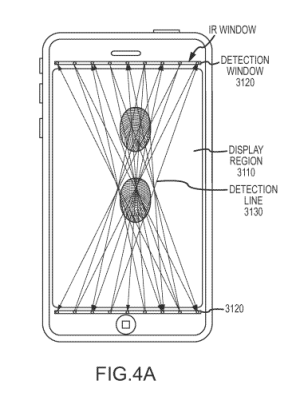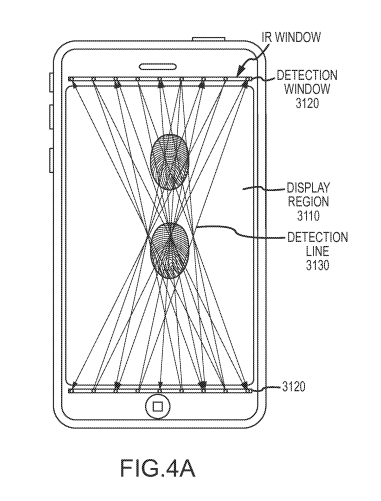The U.S. Patent & Trademark Office recently posted a patent application that Apple filed way back in 2012. The patent reveals a new take on touchscreen input. This new technology would allow Apple devices to detect and incorporate the pressure of touches. The new touchscreen uses frustrated total internal reflection to determine how hard a user is pushing.
This application provides techniques, including circuits and designs, which can determine amounts of force applied, and changes in amounts of force applied, by the user when contacting a touch device (such as a touch pad or touch display). These techniques can be incorporated into devices using touch recognition, touch elements of a GUI, and touch input or manipulation in an application program. This application also provides techniques, including devices that apply those techniques, which can determine amounts of force applied, and changes in amounts of force applied, by the user when contacting a touch device, and in response thereto, provide additional functions available to a user of a touch device. 1
This new touchscreen makes use of infrared (IR) transmitters. Essentially, there are a bunch of IR transmitters below the touchscreen that transmit IR light onto the glass at a specific, defined angle. A users finger will disrupt the IR light, with higher pressure disrupting more so than lower pressure. Perhaps the best description of the new technology comes from the patenet application abstract:
Detecting force and touch using FTIR and capacitive location. FTIR determines applied force by the user’s finger within infrared transmit lines on a touch device. A pattern of such lines determine optical coupling with the touch device. Capacitive sensing can determine (A) where the finger actually touches, so the touch device more accurately infers applied force; (B) whether finger touches shadow each other; (C) as a baseline for applied force; or (D) whether attenuated reflection is due to a current optical coupling, or is due to an earlier optical coupling, such as a smudge on the cover glass. If there is attenuated reflection without actual touching, the touch device can reset a baseline for applied force for the area in which that smudge remains. Infrared transmitters and receivers are positioned where they are not visible to a user, such as below a frame or mask for the cover glass.2
- Apple Patent Application, “Frustrated Total Internal Reflection and Capacitive Sensing,” filed September 28, 2012. ▲
- Ibid ▲


